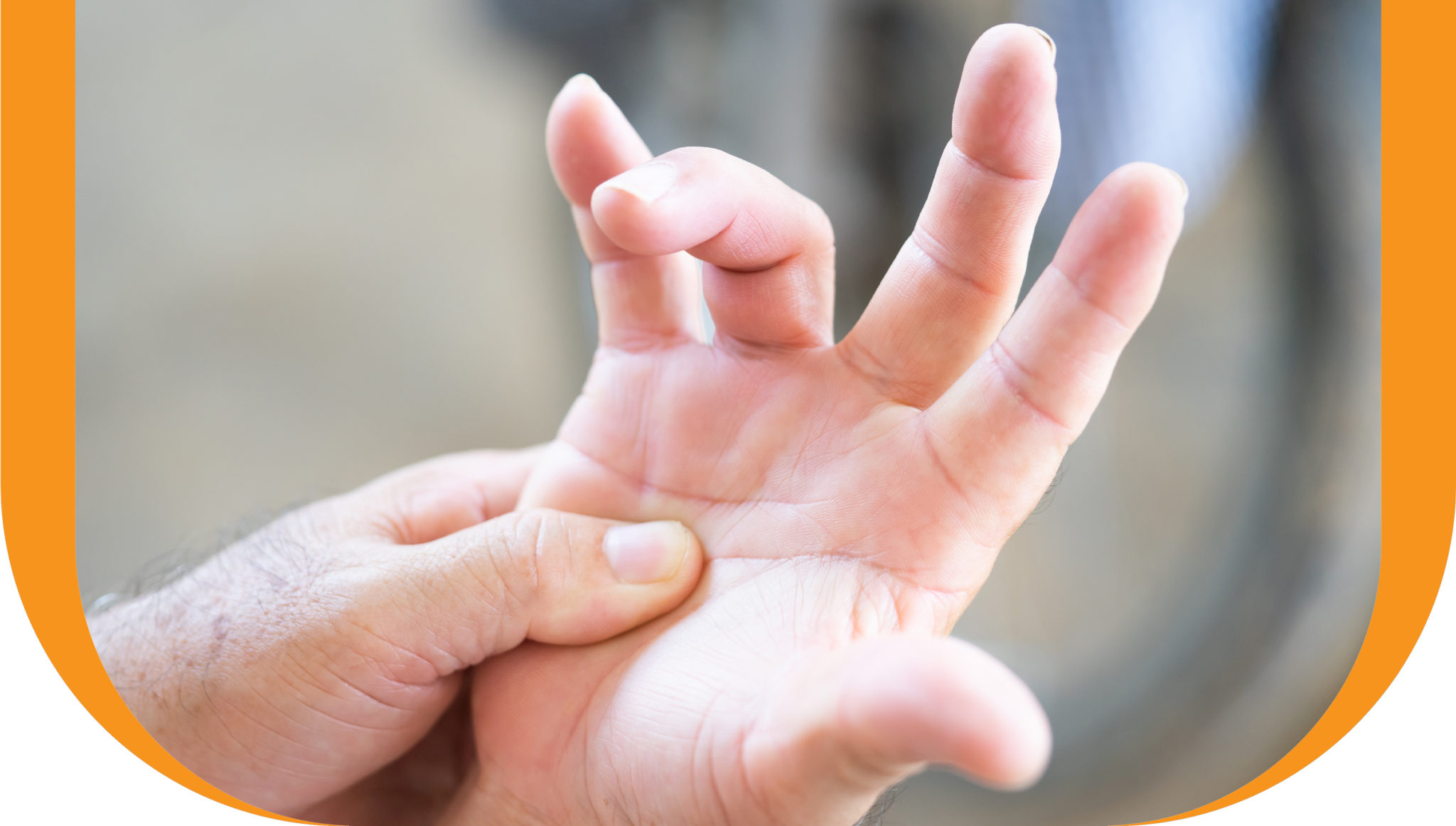
What is Trigger Finger?
Trigger finger (also known as stenosing tenosynovitis) is a condition that locks your finger in a bent position. You may be able to straighten the finger with effort, or if the condition is more severe, you may not be able to straighten it at all. In addition, the finger may only straighten or bend with a sudden snapping motion, as if it is catching on something along the way.
What Causes Trigger Finger?
Each of your fingers has flexor tendons that enable you to bend them, and those tendons are protected by tendon sheaths. Trigger finger occurs when a tendon sheath becomes inflamed and narrowed, so there is not enough room for the tendon to move freely.
If the condition progresses, the tendon can thicken, become scarred, or develop bumps called nodules. These changes impede movement even more.
There are several risk factors that affect how likely you are to develop trigger finger:
- Repetitive gripping: Jobs and activities that involve gripping repeatedly or for extended periods.
- Gender: Women are more likely than men to develop trigger finger
- Certain health conditions: Diseases like diabetes and rheumatoid arthritis..
- Surgery for carpal tunnel syndrome: Trigger finger is a possible complication of CTS surgery.
Signs and Symptoms of Trigger Finger
If you think you may have trigger finger but aren’t sure, here are some signs to look for:
- Stiff finger, especially in the morning
- The sensation of clicking or popping when you move your finger
- The finger catching during movement then suddenly popping straight
- Inability to straighten your finger
- A painful bump at the base of the finger on the palm side
You should seek professional medical advice if your finger joint feels hot and inflamed, as that may be a sign of an infection.
How is Trigger Finger Treated?
Some of the possible treatments for trigger finger include:
- Rest
- Physiotherapy: Can restore movement with exercises, stretches, and other therapies
- Anti-inflammatory drugs: Can relieve pain but are not likely to relieve swelling of the tendon sheath.
- Steroid injection: Cortisone injected into a tendon sheath can reduce inflammation and swelling.
- Surgery: Using a type of surgery called “tendon release surgery”, a surgeon can cut open the affected sheath to let the tendon move freely.
Physiotherapy for Trigger Finger
At Activa Clinics, we have physiotherapists with special training in hand therapy. That means they have a thorough understanding of hand biomechanics and the most effective ways to treat dysfunctions.
They can create custom treatment plans for trigger finger. By taking into account the severity of your condition and your unique needs, they can choose the best treatment options and combine them into your custom treatment. That includes therapies such as:
Exercises and stretches: Can improve the tendon’s ability to glide through the tendon sheath smoothly.
Splinting: Prevents irritation by keeping the finger from “locking” and “clicking”.
Massage: Can provide pain relief and speed up recovery.
How to Prevent Trigger Finger
The best way to reduce your risk of developing trigger finger is to take regular breaks from activities that involve repetitive or prolonged gripping, such as:
-
- Using small tools
- Handwriting
- Playing an instrument
- Rock climbing
- Playing video games
Book an Appointment
There’s no reason not to get help from a medical professional for your trigger finger. Treatments such as physiotherapy can offer a non-invasive, drug-free solution to get you fully recovered as soon as possible.